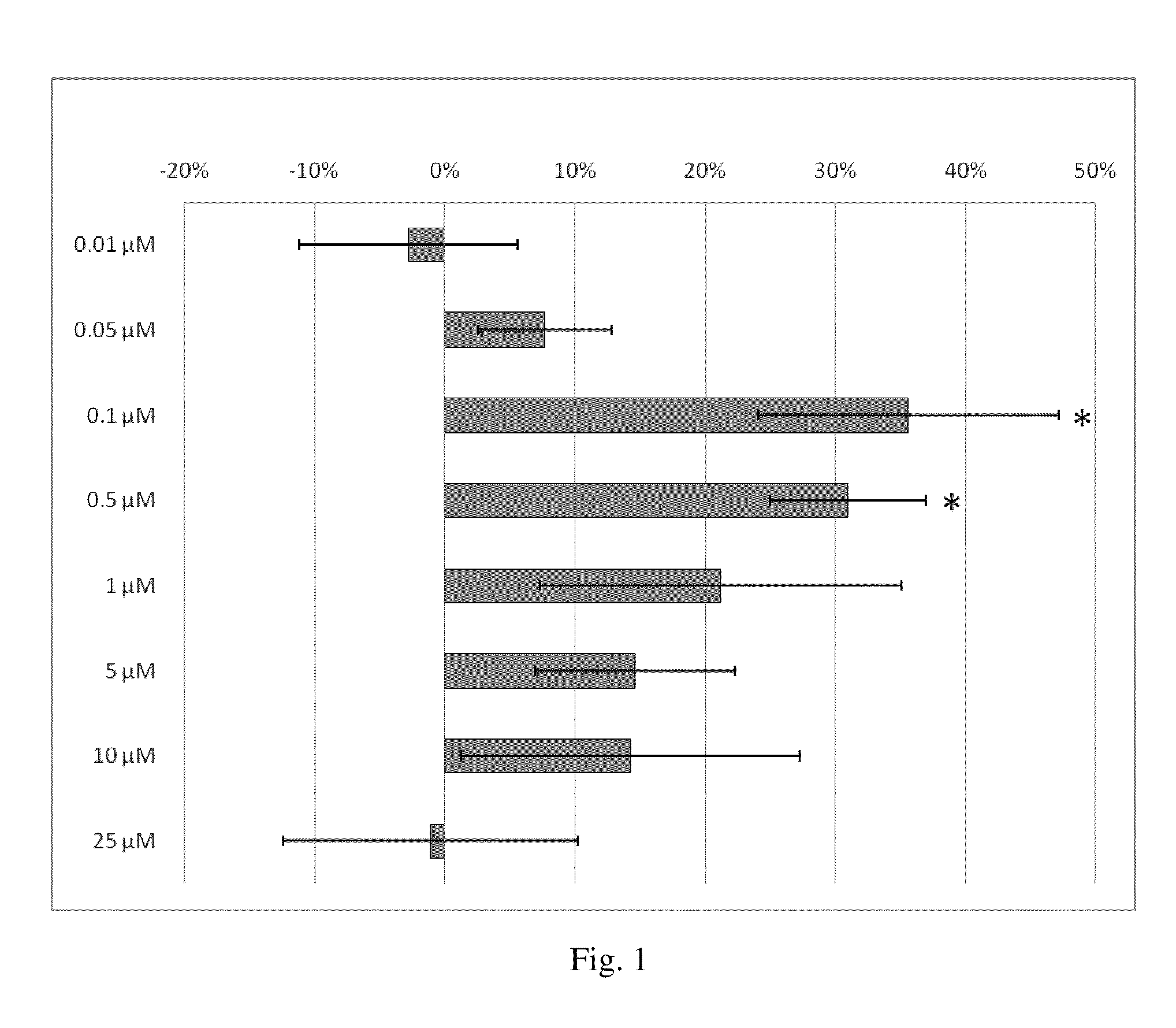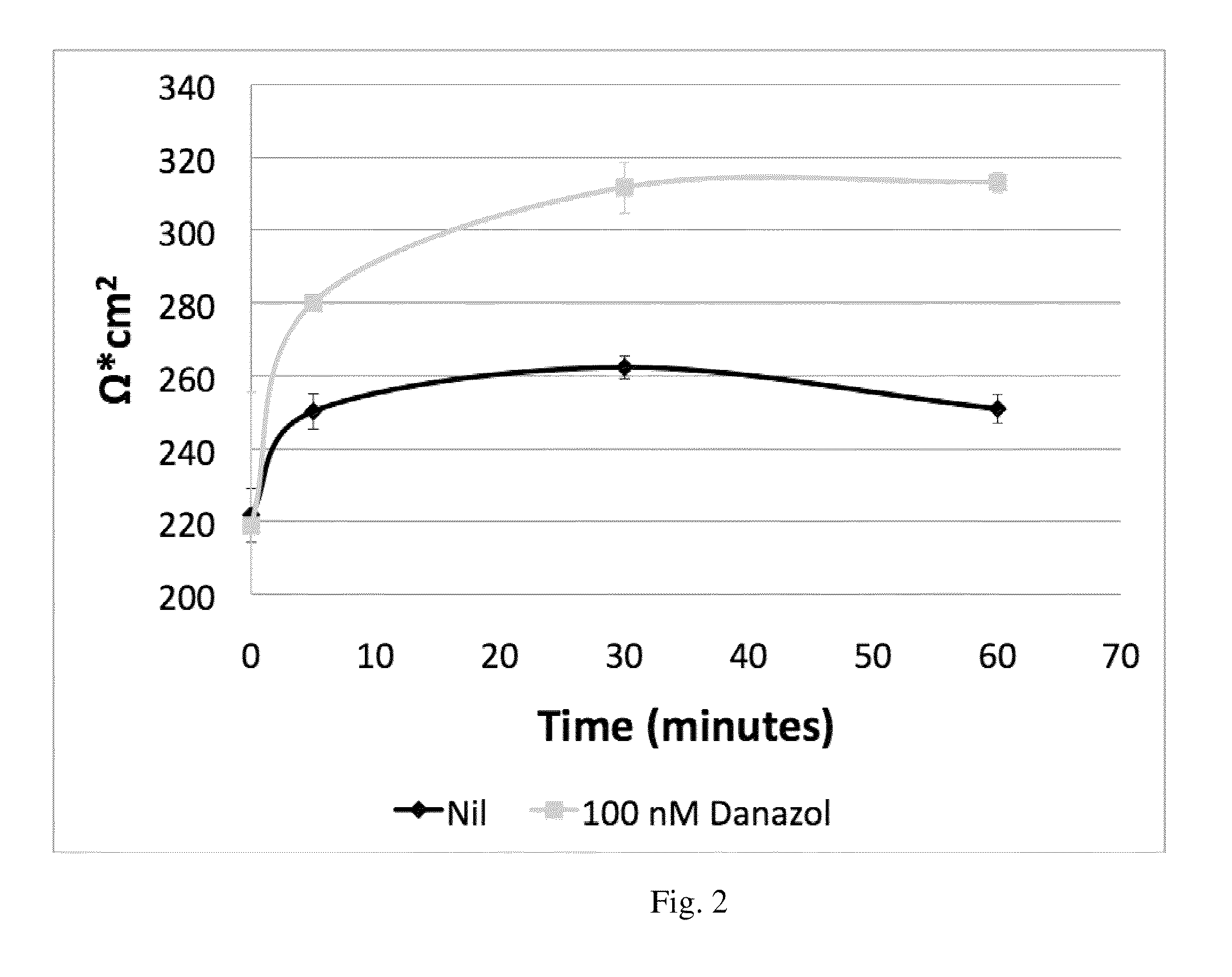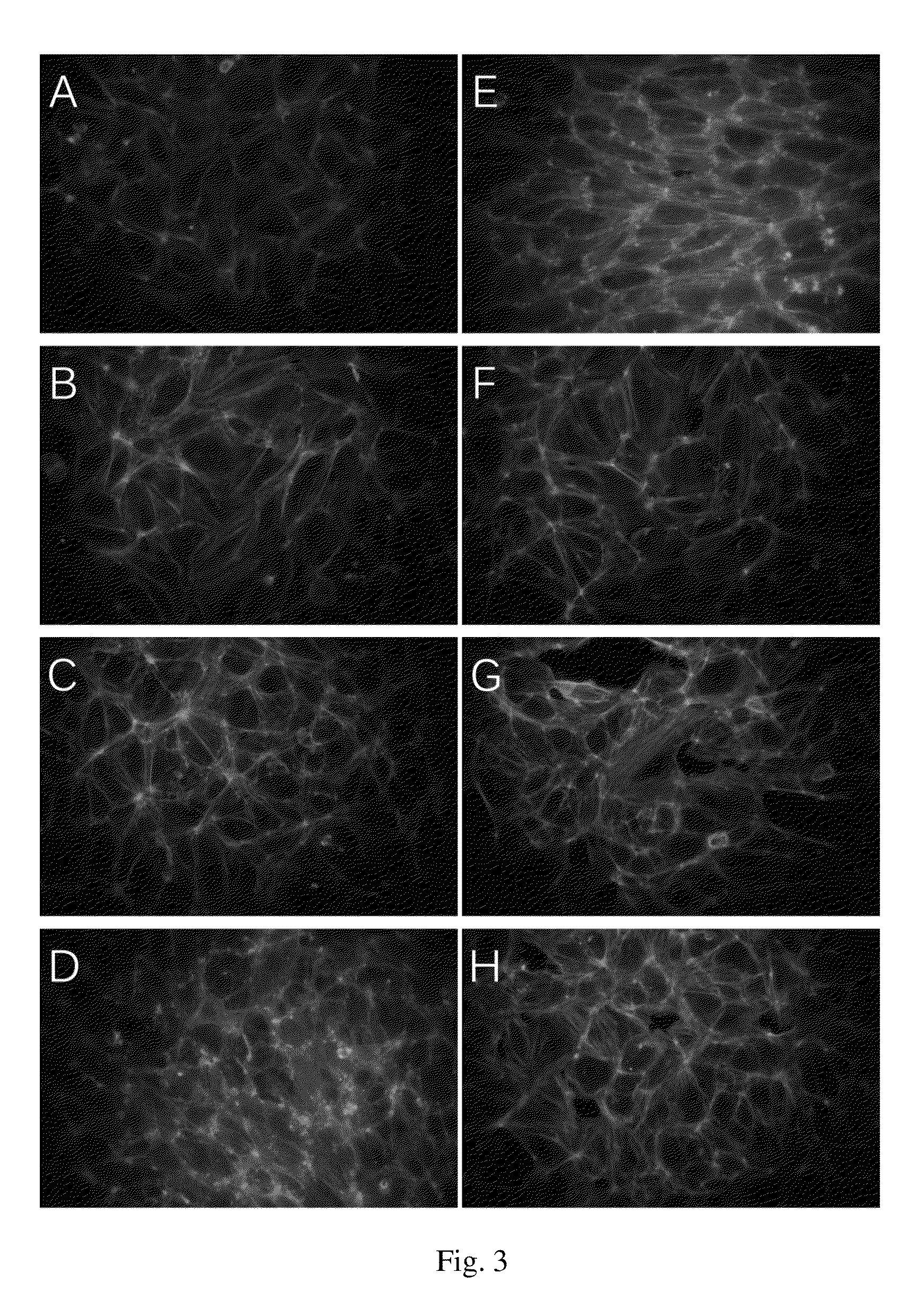Methods of treatment of diseases
a disease and disease technology, applied in the field of diseases, can solve the problems of vascular leakage into underlying tissues, edema causing fluid leakage into tissues with serious and life-threatening consequences, and open gaps in the endothelial barrier, so as to accelerate the aging of the vessel wall and increase the susceptibility to infections
- Summary
- Abstract
- Description
- Claims
- Application Information
AI Technical Summary
Benefits of technology
Problems solved by technology
Method used
Image
Examples
example 1
[0144]This example demonstrates that oral administration of danazol to patients with diabetic macular edema (DME) is safe with no evidence of serious adverse events. Danazol can reduce DME in a BMI dosage-adjusted manner and trends toward improved visual acuity. As shown in FIGS. 1 and 2 danazol can have a biphasic effect on endothelial cells: At low doses, danazol decreases vascular leakage, while at higher concentrations an increase in vascular permeability is observed. This biphasic effect was supported by the effectiveness of danazol vivo at different BMIs discussed below.
[0145]A 12-week randomized placebo-controlled double-masked study to evaluate the safety and efficacy of danazol for DME was conducted at St. Michael's Hospital in Canada. Included were patients with DME and a central subfield retinal thickness of 300 μm or greater. A total of 34 patients constituted the safety set population. The efficacy evaluable population (n=23) was composed of patients from the safety set...
example 2
[0150]This example demonstrates the efficacy and safety of the oral administration of two different dose amounts of danazol in patients with DME.
[0151]A randomized, placebo-controlled, parallel, double-masked study is performed to demonstrate the efficacy and safety of two doses (0.5 mg per BMI per day and 1.0 mg per BMI per day) of danazol in adult patients with DME. 450 randomized patients represent the sample size. Efficacy can be determined by improved visual acuity (VA) compared to a placebo (lactose and magnesium stearate). Additionally, the efficacy and tolerability of the two oral BMI-related doses of danazol is monitored by a change in the ventral macular thickness (CMT) and VA responder status compared to a placebo (lactose and magnesium stearate).
[0152]Once the patient meets the study enrollment criteria and written informed consent has been obtained, the patient's BMI and waist / hip ratio is calculated. The two doses of oral danazol (or placebo) are given over a period of...
example 3
Danazol's Effects on Angiogenesis (Comparative)
[0165]A. HUVEC Cell Proliferation
Protocol:
[0166]Primary human umbilical vein endothelial cells (HUVECs) and EGM-2 growth medium were obtained from Cambrex (Walkersville, Md.). The cells were passaged in medium supplemented with 2% fetal calf serum (FCS) in tissue culture flasks at 37° C. and 5% CO2. Subculturing was performed using trypsin when 60-80% confluence was obtained as specified by the supplier.
[0167]Cryopreserved ampoules of passage 2 HUVECs were thawed and plated in 96 well tissue culture plates at 5,000 cells / cm2. A 50 mM stock solution of danazol was prepared in ethanol and the FCS in the medium was increased to 5% to keep danazol in solution. The cells were treated with medium containing final concentrations of danazol ranging from 0.1 to 100 μM in triplicates. 24, 48, and 72 hour incubations were performed and cell proliferation was determined utilizing Celltiter 96 AQueous One Solution Cell Proliferation assay from Prome...
PUM
 Login to View More
Login to View More Abstract
Description
Claims
Application Information
 Login to View More
Login to View More - R&D
- Intellectual Property
- Life Sciences
- Materials
- Tech Scout
- Unparalleled Data Quality
- Higher Quality Content
- 60% Fewer Hallucinations
Browse by: Latest US Patents, China's latest patents, Technical Efficacy Thesaurus, Application Domain, Technology Topic, Popular Technical Reports.
© 2025 PatSnap. All rights reserved.Legal|Privacy policy|Modern Slavery Act Transparency Statement|Sitemap|About US| Contact US: help@patsnap.com



